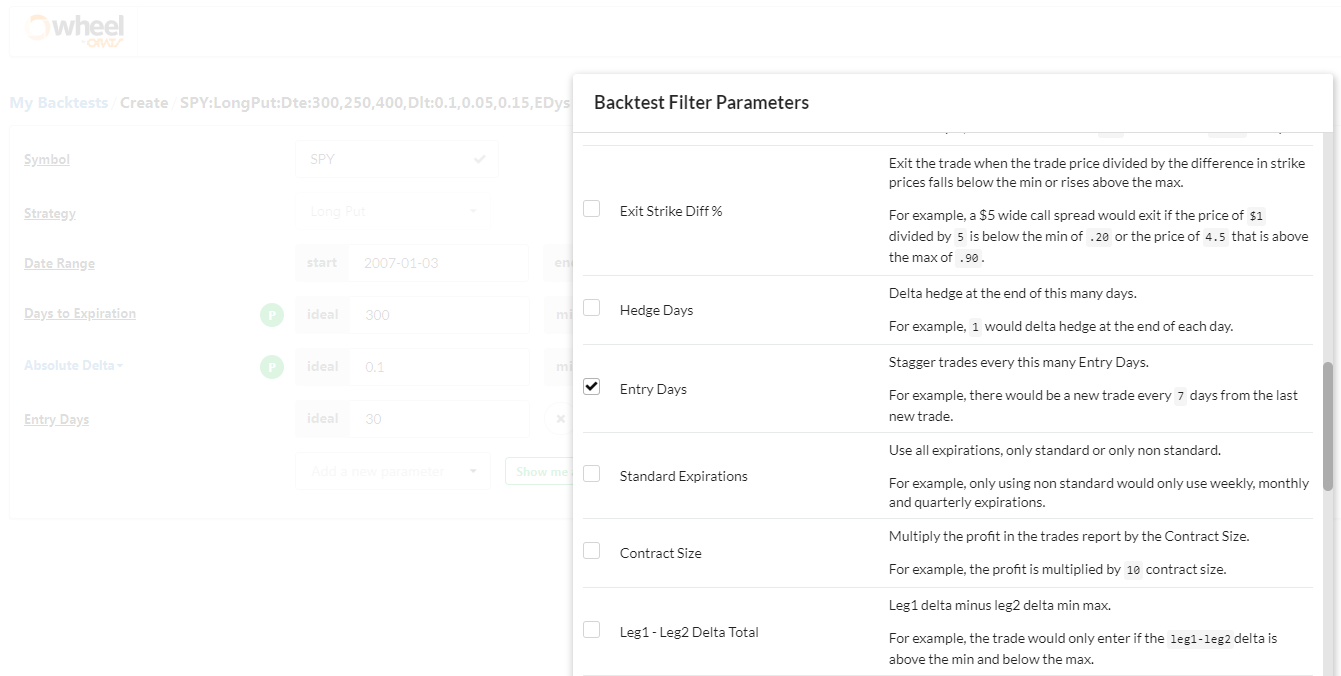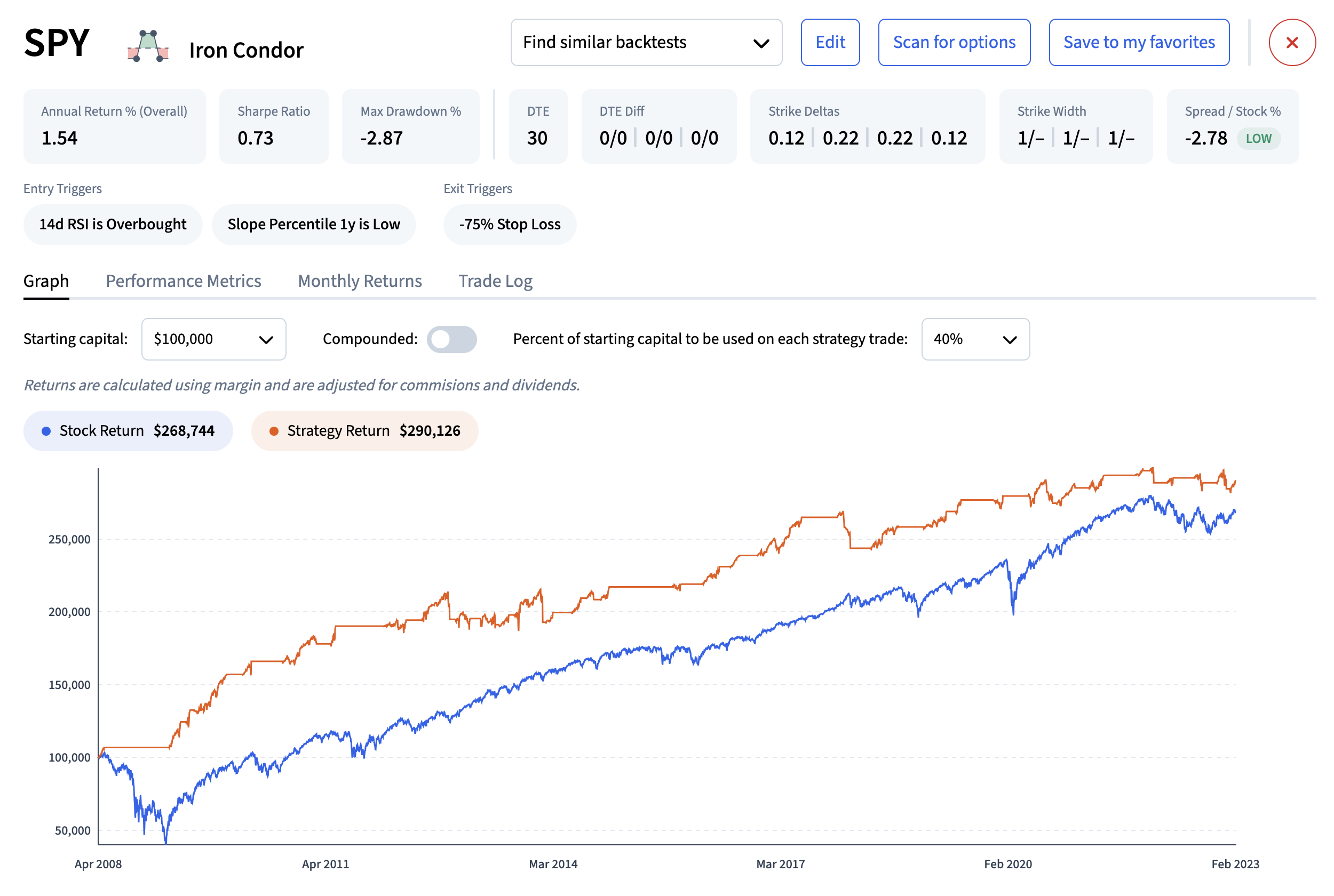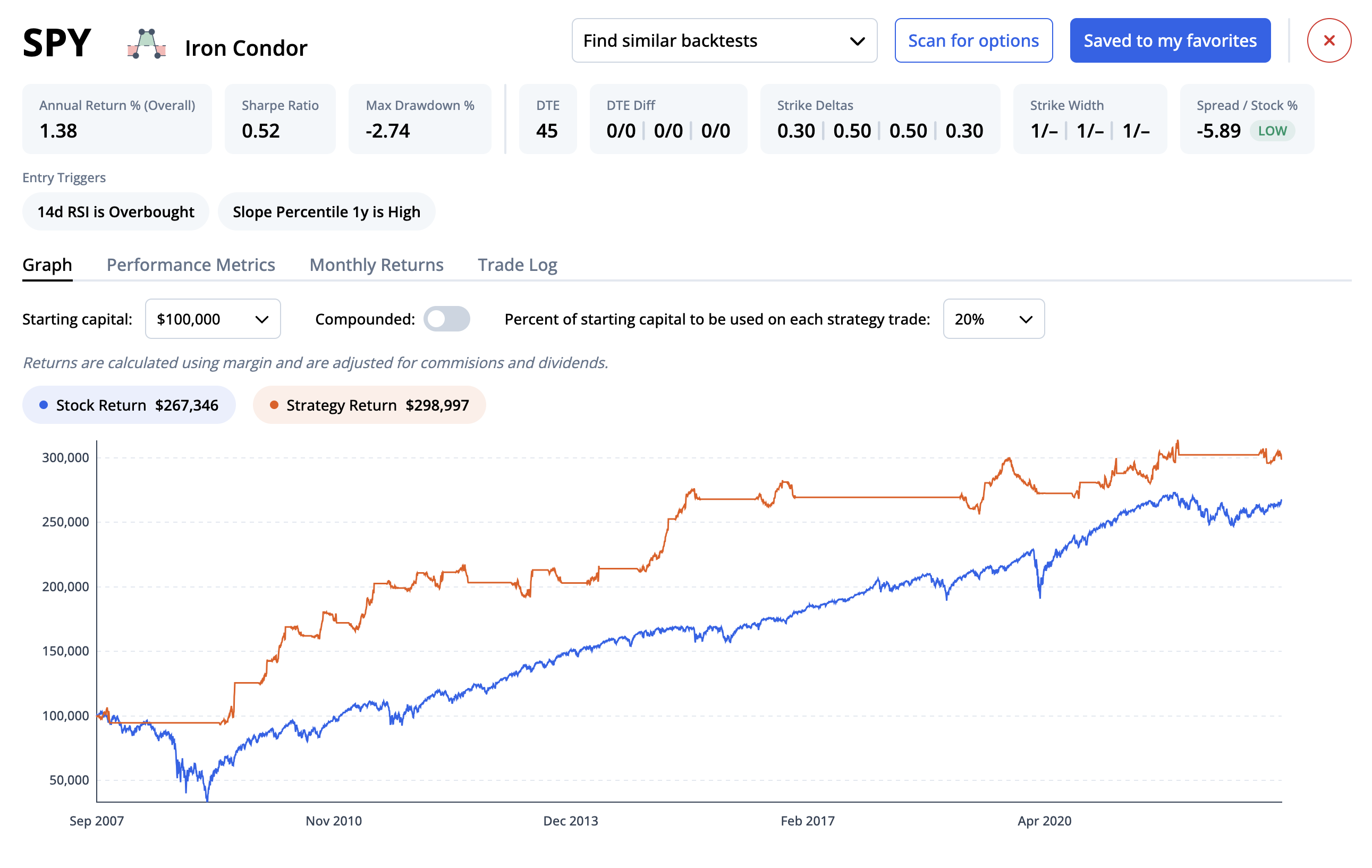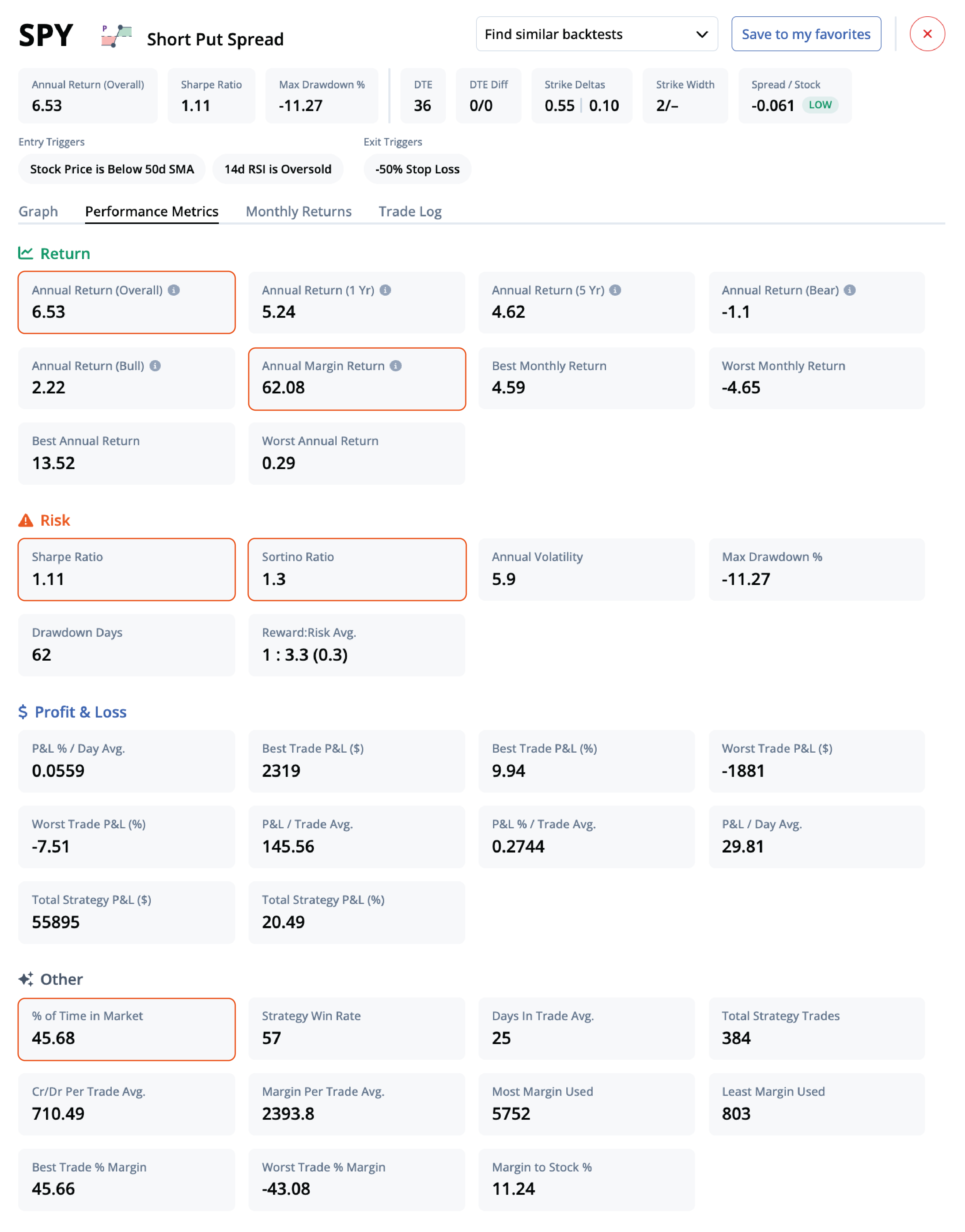Backtesting
Monday, February 25th 2019
Backtesting Using Staggered Trades for Smoother Results
Options backtesting using staggering trades can help smooth and improve the consistency of backtests, especially long-dated expirations. Here's how to put this technique in your trading strategy.
Summary
Staggering trades can help smooth and improve the consistency of backtests, especially in options strategies with long days to expiration. ORATS offers a backtesting parameter called 'EntryDays' that allows multiple trades to be on at the same time. By selecting 'EntryDays' and setting the number of days you wish new trades to be entered, you can avoid path dependency in your backtests.
The technique offered by the ORATS backtester parameter called 'EntryDays' allows multiple trades to be on at the same time. Staggering trades helps to smooth results especially in options strategies with long days to expiration.
For example, if you are testing a long dated put and the stock steadily drifts up before crashing down will have much different results depending when the put trade was entered. This is called a backtest suffering from 'path dependency'.

Select 'EntryDays' and set the number of days you wish new trades to be entered. We use 30 days often but also have used down to 1 day between trades.
Still curious about how to put this trading strategy into practice? Watch the video for a demonstration of this technique:
Disclaimer:
The opinions and ideas presented herein are for informational and educational purposes only and should not be construed to represent trading or investment advice tailored to your investment objectives. You should not rely solely on any content herein and we strongly encourage you to discuss any trades or investments with your broker or investment adviser, prior to execution. None of the information contained herein constitutes a recommendation that any particular security, portfolio, transaction, or investment strategy is suitable for any specific person. Option trading and investing involves risk and is not suitable for all investors.
All opinions are based upon information and systems considered reliable, but we do not warrant the completeness or accuracy, and such information should not be relied upon as such. We are under no obligation to update or correct any information herein. All statements and opinions are subject to change without notice.
Past performance is not indicative of future results. We do not, will not and cannot guarantee any specific outcome or profit. All traders and investors must be aware of the real risk of loss in following any strategy or investment discussed herein.
Owners, employees, directors, shareholders, officers, agents or representatives of ORATS may have interests or positions in securities of any company profiled herein. Specifically, such individuals or entities may buy or sell positions, and may or may not follow the information provided herein. Some or all of the positions may have been acquired prior to the publication of such information, and such positions may increase or decrease at any time. Any opinions expressed and/or information are statements of judgment as of the date of publication only.
Day trading, short term trading, options trading, and futures trading are extremely risky undertakings. They generally are not appropriate for someone with limited capital, little or no trading experience, and/ or a low tolerance for risk. Never execute a trade unless you can afford to and are prepared to lose your entire investment. In addition, certain trades may result in a loss greater than your entire investment. Always perform your own due diligence and, as appropriate, make informed decisions with the help of a licensed financial professional.
Commissions, fees and other costs associated with investing or trading may vary from broker to broker. All investors and traders are advised to speak with their stock broker or investment adviser about these costs. Be aware that certain trades that may be profitable for some may not be profitable for others, after taking into account these costs. In certain markets, investors and traders may not always be able to buy or sell a position at the price discussed, and consequently not be able to take advantage of certain trades discussed herein.
Be sure to read the OCCs Characteristics and Risks of Standardized Options to learn more about options trading.
Related Posts



